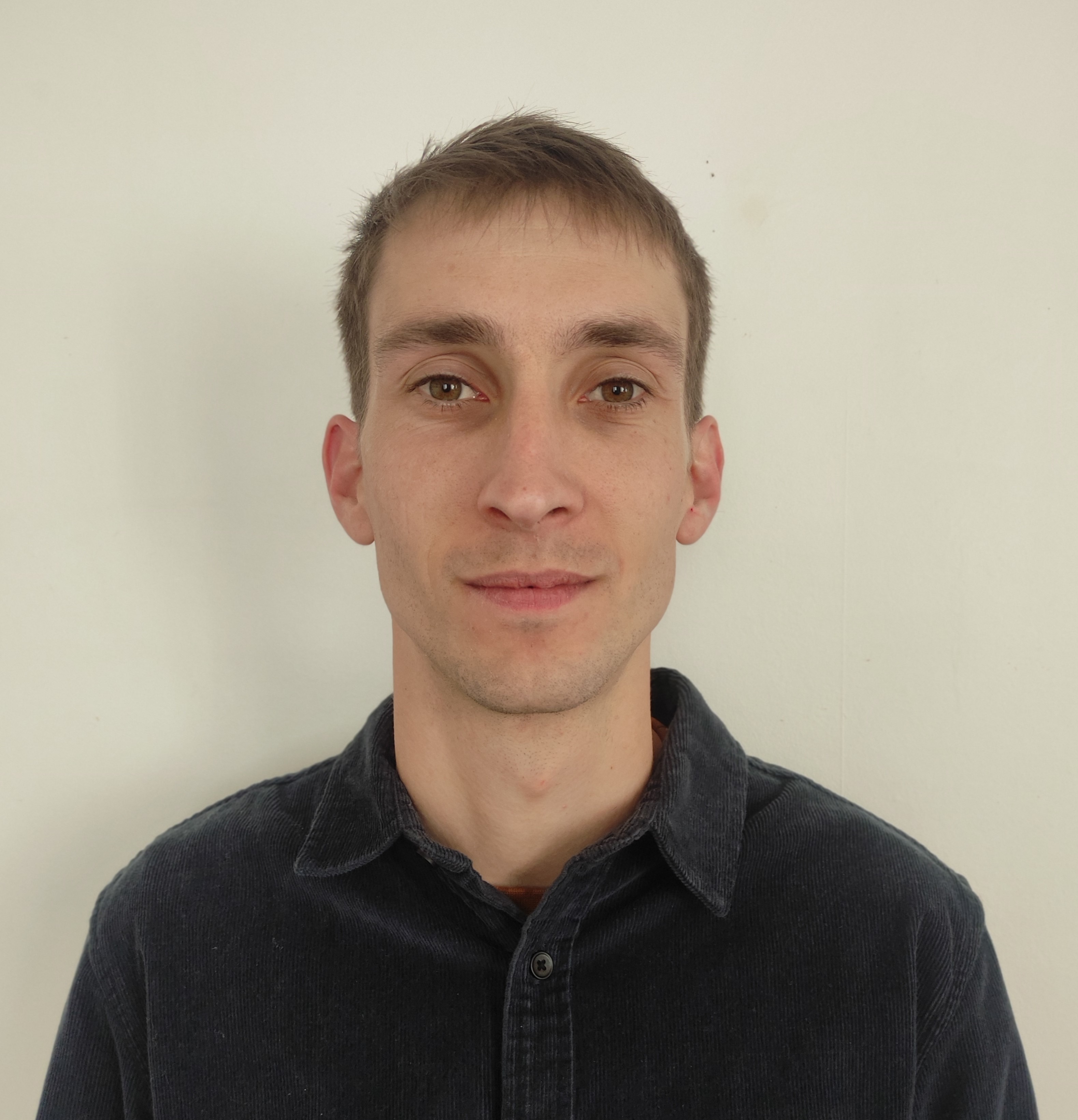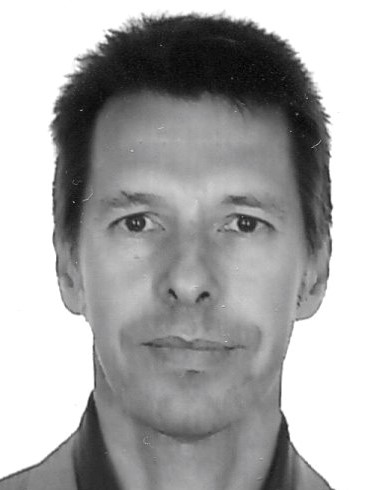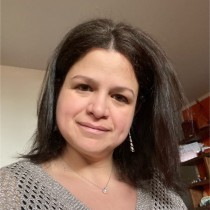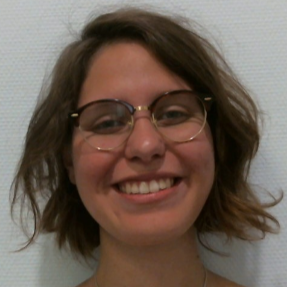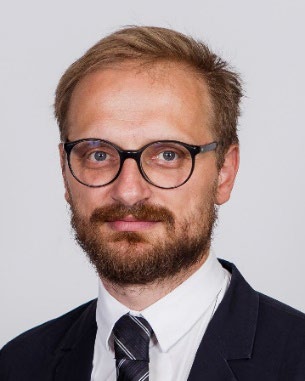NEMO 2025 Programme
All times are UTC+2 (Paris, CEST - Central European Summertime).
Digital Twins in Healthcare
The concept of the Digital Twin (DT) was introduced by the NASA in the 1960s during the Apollo missions, using simulators and digital models
to analyze and prevent spacecraft failures. In 2002, Michael Grieves formalized the idea as mirrored spaces modeling, laying the groundwork for modern DTs. The NASA
popularized the term in 2010, linking it to cyber-physical systems. With the rise of IoT, AI, and big data, DTs were adpted in the industry first, especially for factory
monitoring. According to ISO 23247 (2021), a DT is a dynamic virtual representation of a physical system, updated in real time via data
flows. Key components include sensors, realtime communication, digital records, data architecture, and human-machine interfaces.In the healthcare sector, a digital twin refers
to virtual replicas of a biological system, a medical process, or a piece of equipment. It enables the monitoring of health evolution, the simulation of treatments,
and the optimization of care. Thanks to this technology, healthcare professionals can better understand and anticipate patient needs, improve the management of medical
infrastructure, and provide more precise and effective care. In this lecture, I propose a formal definition of a digital twin and several case studies related to healthcare. A practical serious game illustrating the application of DT in a hospital is also presented.
Lecture at
NEMO2025
Date/Time: Thursday, July 17, 2025 at 08:30 UTC+2/CEST
A Journey from Digital Innovation to 5.0 Community of Practice
This lecture will give a general introduction to NEMO 2025 Innovation Camp, created as one of the event contributing to the EU ERASMUS+ Project CoDEMO. The lecture
will remind the ambition and plan of action of CoDEMO Project, dedicated to boost the European transition towards Society 5.0. Starting with key insights on the international
vision of the transition towards Organizations 5.0, the lecture will first highlight the key elements of CoDEMO program, then emphasize the key action levers to innovate
and transform organizations towards society 5.0 : the transition associates the digitalization process with the key dimensions of Human centricity, Resilience and Sustainability. The concrete transition path will be highlighted with concrete examples. This general introduction will then open the way to highlight the structure of the quick innovation process proposed for experimentation in NEMO Innovation Camp, including three main phases: Haptic Design Thinking for creativity, Conceptual Modelling for conceptual solution design and Cyberphysical systems for quick innovation prototyping. The lecture will end by introducing CoDEMO 5.0 community of practice, supported
by OMILAB Innovation Community.
Lecture at
NEMO2025
Date/Time: Tuesday, July 15, 2025 at 08:45 UTC+2/CEST
Conceptual Modelling for Digital Innovation
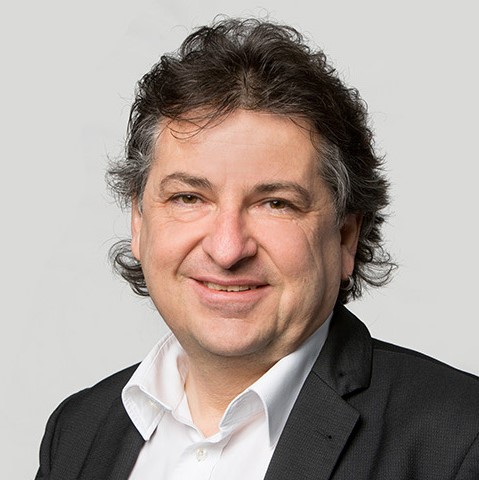
University of Applied Sciences and Arts Northwestern Switzerland FHNW, Switzerland
Conceptual modeling is a powerful approach for driving digital innovation by providing a structured framework to understand, communicate, and solve complex problems. Models are created using pre-defined concepts from a domain-specific modelling language. This lecture begins with an introduction to conceptual modeling, emphasizing the distinction between models and meta-models. A key distinction is made between models—representations of realworld systems—and meta-models, which define the rules and concepts of a domainspecific modeling language. Metamodeling enables stakeholders to agree on the meaning of the concepts fostering a shared understanding of what the model represents. Metamodeling is introduced with the ADOxx platform which can be used for developing the metamodel and graphical notation of a modelling language.Conceptual modeling is applied in design thinking, a user-centered approach to innovation. The Scene2Model approach transforms storyboards into digital assets, bridging the gap between creative
ideation and technical implementation. Combining storyboarding, design thinking, and domain-specific modelling enables organizations to innovate effectively, aligning their innovative ideas with actionable, structured solutions and ensuring that all stakeholders share a common understanding of the solutions they design.
Lecture at
NEMO2025
Date/Time: Wednesday, July 16, 2025 at 09:30 UTC+2/CEST
Digital Servization Strategies and Product-Service-Systems
Despite their increasing relevance in both academia and industrial practice, Product-Service System (PSS) business models require further clarification and development to address the complexities and potential introduced by digital technologies. This lecture aims to provide foundational knowledge on servitization strategies, with a specific focus on digital servitization (e.i, the integration of advanced digital technologies into service-oriented business models). Through real-world case studies and practical examples, participants will gain a comprehensive understanding of how companies are rethinking value creation by shifting from product to service-oriented paradigms. A special emphasis will be placed on identifying barriers and opportunities in the digital transformation journey, including organizational, technological, and cultural challenges. Furthermore, the lecture will explore how an engineering approach, supported by appropriate tools and methods, can effectively support the conceptualization and delivery of PSS. This involves a systematic integration of product and service components to ensure value consistency throughout the lifecycle.
Lecture at
NEMO2025
Date/Time: Wednesday, July 16, 2025 at 08:30 UTC+2/CEST
Design thinking as a tool for sustainable innovation
This presentation explores how Design Thinking and collective intelligence can support meaningful innovation in complex and uncertain contexts. Drawing from Nicole Sofia Röhsig López’s experience in circular economy and eco-design, the talk highlights the importance of reframing problems, engaging diverse perspectives, and designing with both technical and human dimensions in mind. Rather than focusing solely on solutions, it emphasizes the role of design as a tool for questioning assumptions, navigating contradictions, and building sustainable futures. Through real-world cases, the session invites participants to see innovation not only as a process of creation, but as a space for critical reflection and action.
Lecture at
NEMO2025
Date/Time: Tuesday, July 15, 2025 at 09:45 UTC+2/CEST
Cyber Physical Systems for Innovation
Participants will examine how digital model artifacts—originating from business model design— guide the realization of cyberphysical experimentation platforms. Special focus is placed on integrating semantic technologies with IoT hardware, fostering a holistic understanding of both technological feasibility and stakeholder alignment. Through this exploration, the lecture addresses the capabilities needed in a model-driven innovation lab and outlines the interdisciplinary skills expected from future digital leaders. Participants will gain insight into how domain-specific modeling and semantic transformation can bridge human understanding and machine execution within evolving organizational ecosystems.
Lecture at
NEMO2025
Date/Time: Friday, July 18, 2025 at 09:30 UTC+2/CEST
Practice Session: Creativity via Design Thinking / Haptic Design Thinking
Innovation and transformation, as well as the emergence of disruptive business ecosystems have gained increasing significance. One approach to tackle this complex task is Design Thinking, which applies designer problemsolving techniques for agile, ideation, prototyping and testing in innovative processes through collaboration among stakeholders. The goal is to generate ideas by using different design thinking methods, based on tangible visualization of certain aspects of the problem within a developed solution space, where collaboration among stakeholders plays a central role. Through the Scene2Model tool, a transformation of the physical visualization into digital conceptual models is enabled, so that they can be processed and used within modelling tools, further decomposed, and combined with available enterprise assets. This approach enables a location and time-independent collaboration of globally distributed networks and stakeholders, implied by the digital transformation and globalization of businesses. The interplay of Conceptual Modelling and Design Thinking establishes a connection between unrestrained design artefacts and more formal abstractions (e.g., business process models).
Practice Session at
NEMO2025
Date/Time: Tuesday, July 15, 2025 at 11:00 UTC+2/CEST
OMiLAB Conceptual Modelling Toolsets
The digital era is shaped by increasingly complex business models, which are part of ecosystems, involve dependencies, integrate physical objects, and propose disruptive and innovative solutions. These business models place a strong emphasis on the interaction between humans and machines, as they require domain-specific knowledge and technical realization. The Digital Innovation Environment of OMiLAB facilitates the composition of digital ecosystems, as it builds on the notion of digital business models and employs a Digital Twin as a conceptual representation of an intelligent offering. Adequate devices and technologies will be provided for participants to experiment with, instantiate a selected modelling method and realize an experiment based on the application scenario chosen.
Practice Session at
NEMO2025
Date/Time: Wednesday, July 16, 2025 at 11:00 UTC+2/CEST
Practice Session: Simulation and Digital Twins for Organizational Design
In recent years, there has been a growing emphasis on the use of modeling and simulation methods to support decision-making in public health, especially for managing complex systems. At the forefront of this movement is the development of digital twins— real-time virtual representations of physical systems. In the healthcare sector, digital twins can be broadly classified into two types: Individual Digital Twins, which model a single patient, and Organizational Digital Twins (ODTs), which focus on simulating and managing healthcare delivery processes. This course focuses on Organizational Digital Twins. Participants will engage in a serious game, taking on the role of a surgical department manager. They will be challenged to respond to external events—such as sudden changes in demand—and make strategic decisions accordingly. To support these activities, participants will be provided with a prototype of a synchronous ODT and will also have the opportunity to contribute to the development of an asynchronous ODT. This asynchronous version will enable predictive simulations, allowing users to evaluate the performance of alternative organizational strategies under different scenarios.
Practice Session at
NEMO2025
Date/Time: Thursday, July 17, 2025 at 09:30 UTC+2/CEST
Practice Session: Digital Twins
In recent years, there has been a growing emphasis on the use of modeling and simulation methods to support decision-making in public health, especially for managing complex systems. At the forefront of this movement is the development of digital twins— real-time virtual representations of physical systems. In the healthcare sector, digital twins can be broadly classified into two types: Individual Digital Twins, which model a single patient, and Organizational Digital Twins (ODTs), which focus on simulating and
managing healthcare delivery processes. This course focuses on Organizational Digital Twins. Participants will engage in a serious game, taking on the role of a surgical department manager. They will be challenged to respond to external events—such as sudden changes in demand—and make strategic decisions accordingly. To support these activities, participants will be provided with a prototype of a synchronous ODT and will also have the opportunity to contribute to the development of an asynchronous ODT. This asynchronous version will enable predictive simulations, allowing users to evaluate the performance of alternative organizational strategies under different scenarios.
Practice Session at
NEMO2025
Date/Time: Thursday, July 17, 2025 at 11:00 UTC+2/CEST
Practice Session: Digital Twins
In recent years, there has been a growing emphasis on the use of modeling and simulation methods to support decision-making in public health, especially for managing complex systems. At the forefront of this movement is the development of digital twins— real-time virtual representations of physical systems. In the healthcare sector, digital twins can be broadly classified into two types: Individual Digital Twins, which model a single patient, and Organizational Digital Twins (ODTs), which focus on simulating and
managing healthcare delivery processes. This course focuses on Organizational Digital Twins. Participants will engage in a serious game, taking on the role of a surgical department manager. They will be challenged to respond to external events—such as sudden changes in demand—and make strategic decisions accordingly. To support these activities, participants will be provided with a prototype of a synchronous ODT and will also have the opportunity to contribute to the development of an asynchronous ODT. This asynchronous version will enable predictive simulations, allowing users to evaluate the performance of alternative organizational strategies under different scenarios.
Practice Session at
NEMO2025
Date/Time: Friday, July 18, 2025 at 08:30 UTC+2/CEST
The Use of Cyber Physical System Demonstrators
The conceptual output of the business models realized in the previous sessions, namely digitalized model artifacts serve as input for determining thephysical and digital experiment environment. Being aware of the semantic technologies at hand and understanding the capabilities and requirements of IoT hardware components will be the focus of this session.
Practice Session at
NEMO2025
Date/Time: Friday, July 18, 2025 at 11:00 UTC+2/CEST
Case Study STEP 0: Introduction of Company Case Studies & STEP 1: Design Thinking and Creativity
The Case Studies will be introduced and the participants start working on their assigned case study.
Practice Session at
NEMO2025
Date/Time: Tuesday, July 15, 2025 at 14:00 UTC+2/CEST
Case Study STEP 1: Design Thinking and Creativity
Innovation and transformation, as well as the emergence of disruptive business ecosystems have gained increasing significance. One approach to tackle this complex task is Design Thinking, which applies designer problemsolving techniques for agile, ideation, prototyping and testing in innovative processes through collaboration among stakeholders. The goal is to generate ideas by using different design thinking methods, based on tangible visualization of certain aspects of the problem within a developed solution space, where collaboration among stakeholders plays a central role. Through the Scene2Model tool, a transformation of the physical visualization into digital conceptual models is enabled, so that they can be processed and used within modelling tools, further decomposed, and combined with available enterprise assets. This approach enables a location and time-independent collaboration of globally distributed networks and stakeholders, implied by the digital transformation and globalization of businesses. The interplay of Conceptual Modelling and Design Thinking establishes a connection between unrestrained design artefacts and more formal abstractions (e.g., business process models).
Practice Session at
NEMO2025
Date/Time: Tuesday, July 15, 2025 at 16:00 UTC+2/CEST
Case Study: Outputs of the Day
Short stand-up presentation of the progress made by each group in thier respective case studies.
Practice Session at
NEMO2025
Date/Time: Tuesday, July 15, 2025 at 18:00 UTC+2/CEST
Case Study STEP 2: Building Conceptual Solutions through Models
The digital era is shaped by increasingly complex business models, which are part of ecosystems, involve dependencies, integrate physical objects, and propose disruptive and innovative solutions. These business models place a strong emphasis on the interaction between humans and machines, as they require domain-specific knowledge and technical realization. The Digital Innovation Environment of OMiLAB facilitates the composition of digital ecosystems, as it builds on the notion of digital business models and employs a Digital Twin as a conceptual representation of an intelligent offering. Adequate devices and technologies will be provided for participants to experiment with, instantiate a selected modelling method and realize an experiment based on the application scenario chosen.
Practice Session at
NEMO2025
Date/Time: Wednesday, July 16, 2025 at 14:00 UTC+2/CEST
Case Study STEP 2: Building Conceptual Solutions through Models
The digital era is shaped by increasingly complex business models, which are part of ecosystems, involve dependencies, integrate physical objects, and propose disruptive and innovative solutions. These business models place a strong emphasis on the interaction between humans and machines, as they require domain-specific knowledge and technical realization. The Digital Innovation Environment of OMiLAB facilitates the composition of digital ecosystems, as it builds on the notion of digital business models and employs a Digital Twin as a conceptual representation of an intelligent offering. Adequate devices and technologies will be provided for participants to experiment with, instantiate a selected modelling method and realize an experiment based on the application scenario chosen.
Practice Session at
NEMO2025
Date/Time: Wednesday, July 16, 2025 at 16:00 UTC+2/CEST
Case Study: Outputs of the Day
Short stand-up presentation of the progress made by each group in thier respective case studies.
Practice Session at
NEMO2025
Date/Time: Wednesday, July 16, 2025 at 18:00 UTC+2/CEST
Case Study STEP 2: Building Conceptual Solutions through Models & STEP 3: Building Innovation Prototypes
The conceptual output of the business models realized in the previous sessions, namely digitalized model artifacts serve as input for determining thephysical and digital experiment environment. Being aware of the semantic technologies at hand and understanding the capabilities and requirements of IoT hardware components will be the focus of this session.
Practice Session at
NEMO2025
Date/Time: Thursday, July 17, 2025 at 13:30 UTC+2/CEST
Case Study STEP 3: Building Innovation Prototypes
The conceptual output of the business models realized in the previous sessions, namely digitalized model artifacts serve as input for determining thephysical and digital experiment environment. Being aware of the semantic technologies at hand and understanding the capabilities and requirements of IoT hardware components will be the focus of this session.
Practice Session at
NEMO2025
Date/Time: Thursday, July 17, 2025 at 15:30 UTC+2/CEST
Case Study: Outputs of the Day
Short stand-up presentation of the progress made by each group in thier respective case studies.
Practice Session at
NEMO2025
Date/Time: Thursday, July 17, 2025 at 17:30 UTC+2/CEST
Case Study STEP 3: Building Innovation Prototypes
The conceptual output of the business models realized in the previous sessions, namely digitalized model artifacts serve as input for determining thephysical and digital experiment environment. Being aware of the semantic technologies at hand and understanding the capabilities and requirements of IoT hardware components will be the focus of this session.
Practice Session at
NEMO2025
Date/Time: Friday, July 18, 2025 at 14:00 UTC+2/CEST
Case Study STEP 4: Prepare the Presentation: Convince the Managers!
It is time to start preparing the presentation of the innovative solution, which you have developed during the week.
Practice Session at
NEMO2025
Date/Time: Friday, July 18, 2025 at 16:00 UTC+2/CEST
Case Study: Outputs of the Day
Short stand-up presentation of the progress made by each group in thier respective case studies.
Practice Session at
NEMO2025
Date/Time: Friday, July 18, 2025 at 18:00 UTC+2/CEST
Final Case Study Presentations
Each group presents and showcases the results achieved.
Practice Session at
NEMO2025
Date/Time: Saturday, July 19, 2025 at 08:45 UTC+2/CEST
Final Case Study Presentations
Each group presents and showcases the results achieved.
Practice Session at
NEMO2025
Date/Time: Saturday, July 19, 2025 at 14:00 UTC+2/CEST
Final Case Study Presentations
Each group presents and showcases the results achieved.
Practice Session at
NEMO2025
Date/Time: Saturday, July 19, 2025 at 11:00 UTC+2/CEST


